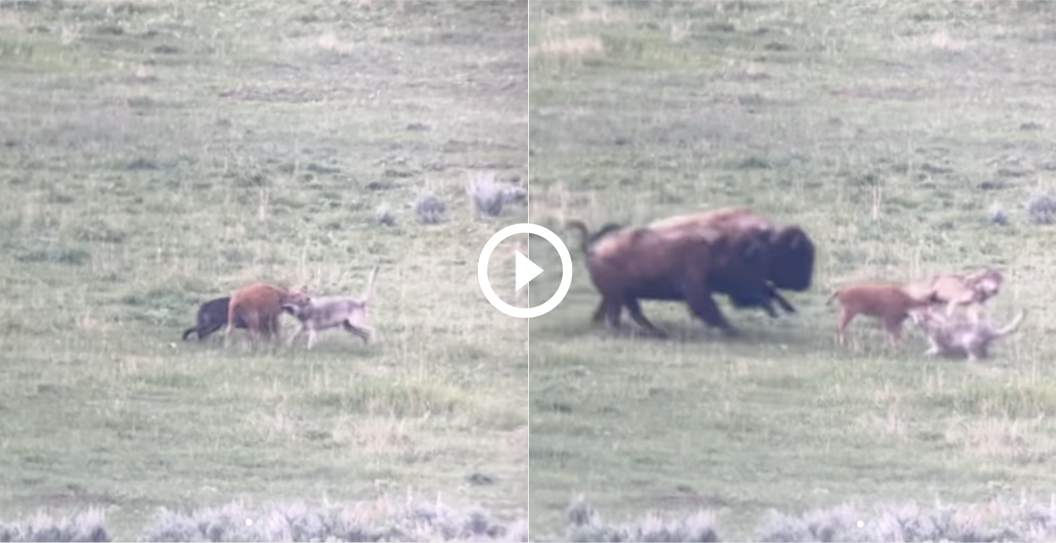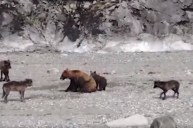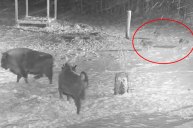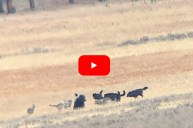Luck was on the side of one small bison calf: As it slept on the outskirts of the herd, two Yellowstone wolves attacked the young animal. As the wolves attempted to bring the calf down by the neck, two huge bison from the nearby herd came charging to the rescue on the heels of a third wolf.
Michael Sypniewski, a guide for the Yellowstone Wolf Tracker, caught an incredible sight on video in Yellowstone National Park on June 15. "This young bison was sleeping on the outskirts of its herd when it was caught off guard by a group of wolves. Separated from the herd, I thought for sure the wolves were on their way to securing an easy meal."
The two adult bison charged the wolves and then sandwiched the calf between them, escorting it safely away from the cowed wolves.
Sypniewski said the bison rejoined the herd and then the herd carefully pushed the wolves out of the area, while the calf appeared to have sustained mild injuries. "To say this calf was lucky would be an understatement," Sypniewski wrote in his Instagram post.
View this post on Instagram
As evidenced by the video, bison are tough prey even for wolves. They are the largest land mammals in North America, weighing up to 2,000 pounds, and travel in tight-knit herds. Despite their bulk, they can reach speeds of 35 miles per hour and are extremely agile. A wolf, on the other hand, only weighs between 60 and 145 pounds. Though they can reach similar speeds, a wolf is no match for a healthy, adult bison. Instead, wolves will work together to target vulnerable, injured bison, or to draw calves away from their herds.
Bison, however, are very successful at "anti-predator defense." Unlike other members of the bovidae family, they frequently come to the aid of vulnerable or young herd members under attack. Bison are also not afraid to confront their predators and use their horns for defense, a phenomenon that Sypneiwski also caught on video in May. In the video, wolves unsuccessfully attempt to draw the newborn calf away from its mother. The mother keeps the calf tucked close to her side as she charges the wolves and shakes her horns, eventually outlasting the predators and returning to her herd with the calf.
View this post on Instagram
These anti-predator defenses are extremely effective, and a study on wolves hunting bison in Northern Yellowstone showed that, though bison were twice as common as elk, wolves showed a strong preference towards elk for prey, suggesting that wolves avoid bison and pursue less dangerous prey. The study also found that a successful capture of elk typically required a pack of two to six wolves, while a successful capture of a bison required at least nine wolves. If wolves want bison meat, they have a far easier time scavenging it than bringing down a bison themselves, even a newborn one.
READ MORE: The Number One Thing to Know Before You Visit Yellowstone




